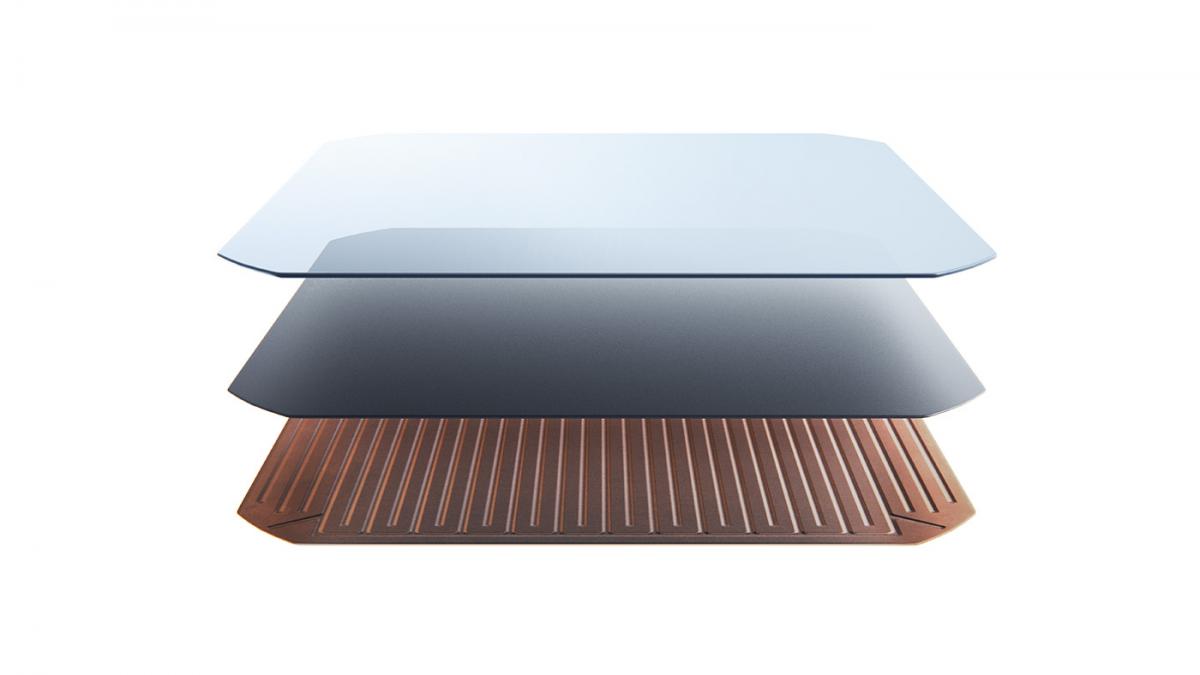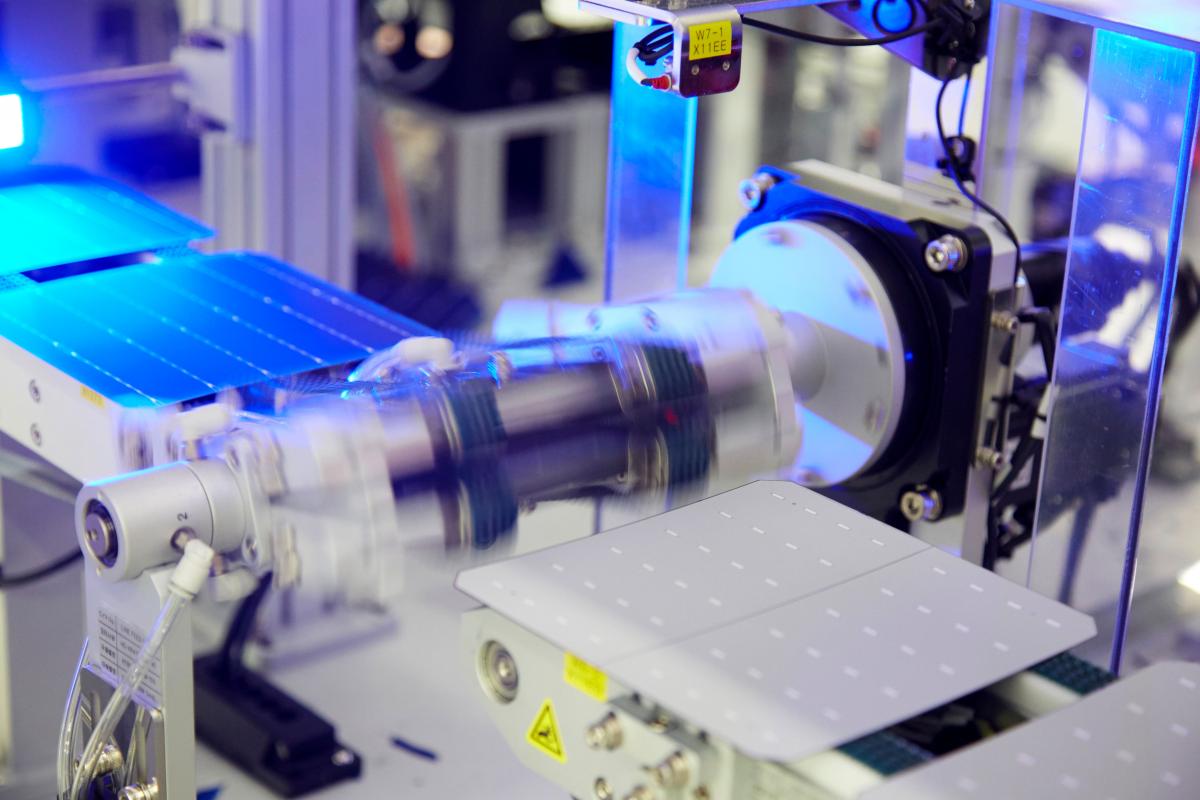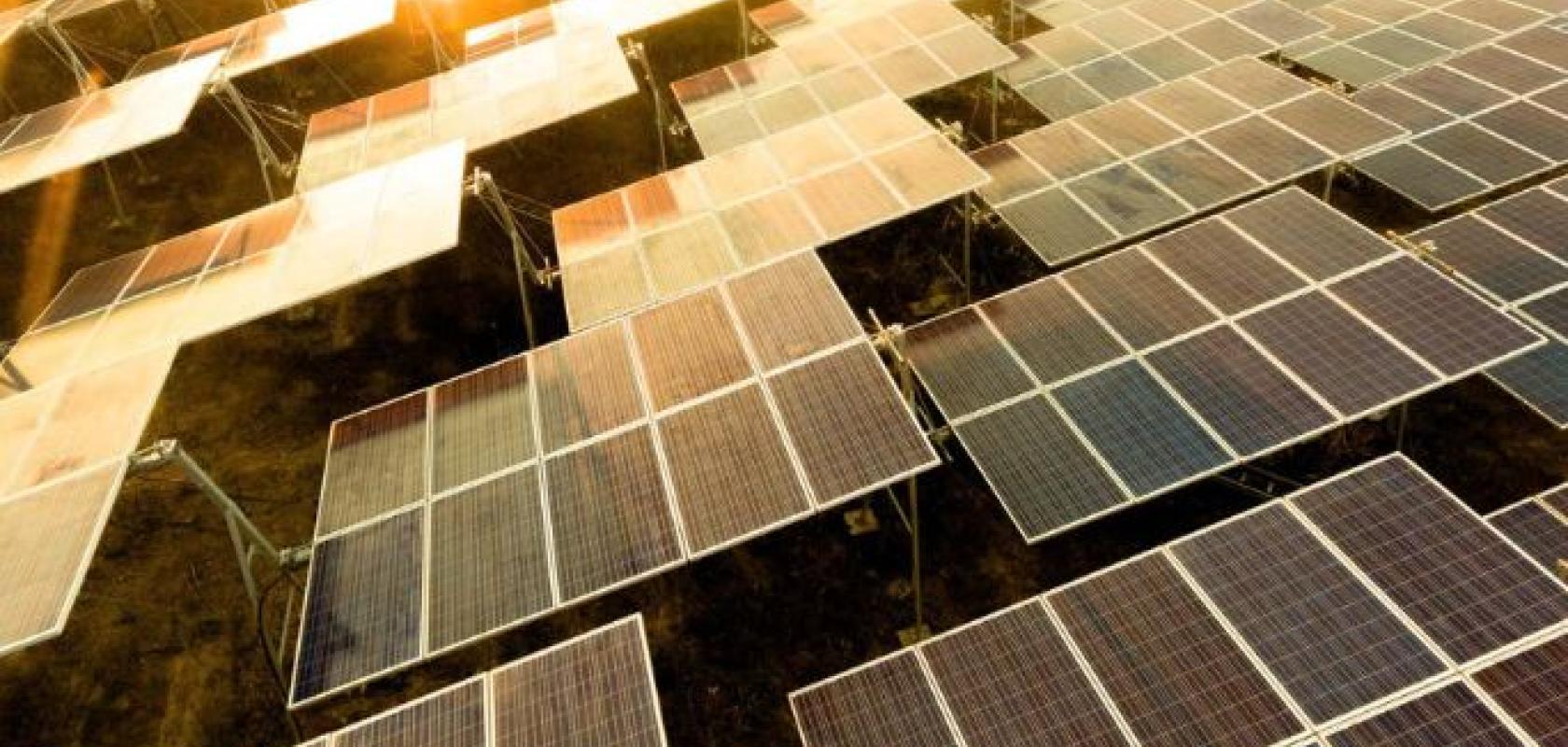Current progress on switching from fossil fuels to renewable energy will not keep global temperature rises below the 2°C threshold that governments recognise as dangerous. That was the message of the Fifth Assessment Report from the United Nations Intergovernmental Panel on Climate Change (IPCC), published in 2014. Since then, in 2016, the world’s countries signed up to the goal of limiting the temperature increase to just 1.5°C, in the Paris Agreement – but last year, further analysis released by the UN IPCC revealed that not enough progress is being made to hit this target.
It is perhaps not surprising then that, currently, just two per cent of the world’s electricity is produced by solar power. Although that proportion is increasing – for example, the International Energy Agency Renewables 2018 forecast sees global solar power generation capacity growing by 580GW from 2018 to 2023, when it would then supply four per cent of the globe’s electricity. However, the IPCC’s Fifth Assessment report states that for the best chance of limiting global warming, the share of solar photovoltaics in global electricity generation should rise to 12 per cent by 2030 and up to one-third by 2050 – although in the vast majority of the IPCC’s scenarios this proportion remains in the single digit percentage range.
The report concludes that despite solar providing a small percentage of electricity, it ‘has the largest technical potential of all energy sources and, in concert with technical improvements and resulting cost reductions, could see dramatically expanded use in the decades to come’.
So, what is the best strategy to drive faster adoption of solar technology? Should photovoltaic (PV) module – or solar panel – producers focus on optimising their optoelectronic technology for efficiency, cost or ease of deployment?
‘The cost structure of solar today is dominated by non-module costs,’ explained Joel Jean, co-founder and chief executive officer of Swift Solar, a start-up headquartered in California. These balance of system (BOS) costs include installation labour, racks to hold panels, wiring, getting permits and other so-called ‘soft costs’. They all contribute to the levelised cost of electricity (LCOE), what Jean calls ‘the real solar electricity cost’.
Both higher efficiency PV conversion from light into electricity and easier installation helps reduce LCOE, he added. Reducing LCOE is necessary because when solar modules come online, the market is flooded with electricity, reducing the price generators get. ‘You actually need solar to get cheaper and cheaper as you put more of it onto the grid,’ Jean said, because companies are making less money from the electricity they produce.
High efficiency is a key part of the strategy of SunPower, a solar module manufacturing giant based in California, offering what it says is the highest efficiency products available commercially. The company’s Maxeon silicon cells offer ‘efficiency greater than 25 per cent’, said Jeff Waters, chief executive officer of the company’s Technologies business unit. ‘SunPower’s Maxeon solar cells produce up to 30 per cent more power when compared to conventional cells. This is in large part due to our back-contact design, which opens up the entire front of the cell to receive light and lowers resistive losses.’ It also increases the amount of energy that leaves the cell, which would otherwise have raised the cell’s temperature and affected its performance.

SunPower’s back-contact design opens up the entire front of the cell to receive light and lowers resistive losses
Additionally, the back-contact design provides more energy over the module’s life, protecting against corrosion and breakage, Waters added. ‘Each Maxeon cell’s tin-copper metal system is more corrosion-resistant than the porous metal paste used in conventional cells,’ he explained. ‘When conventional cells crack, they shatter into tiny pieces. But if the much more pliable Maxeon cell ever does crack, the backside copper metal foundation keeps the cell intact and maintains a high-power output.’
Improvements on reflection
Combining these high-efficiency cells with antireflective (AR) glass provides a further output boost. ‘Because SunPower’s Maxeon cells are so efficient, the additional light that hits the cells from a top-performing AR glass results in relatively more energy output and economic benefit,’ Waters said. ‘The AR glass also helps on cloudy days, where the light is coming from every direction, because the solar cells can effectively “see” more of the sky. This benefit is amplified, not only by Maxeon cell efficiency, but also because SunPower cells can generate electricity from a broader spectrum of sunlight.’
This technology is ideal for generating more energy in the constrained spaces in rooftop deployments, Waters said. While higher efficiency also helps diminish the impact of BOS costs on LCOE, SunPower is also ‘continuously innovating to bring down balance-of-system costs’, he added. Waters highlighted that in the US it offers two platforms, Equinox, for residential, and Helix, for commercial roofs, for which SunPower designs and ships all panels, mechanical, and electrical BOS components as one integrated design. The resulting repeatable design improves install speeds and simplifies troubleshooting, Waters added.
Meanwhile, several companies offer modules exploiting passivated emitter rear cell (PERC) designs, which are slightly lower in efficiency. This approach reflects light that passes through silicon cells without being absorbed. The reflection increases efficiency by offering a second chance to generate electron-hole pairs that separate and travel towards electrodes at the front and back of the cell. Secondly, this reflection removes light of the wrong colour to work with the solar cell, again taking away that unwanted and potentially troublesome energy. Thirdly, the passivation layer reduces recombination of electrons and holes before they reach the electrodes and generate current.
Hanwha Q Cells, based in Seoul, South Korea, was heavily involved in the early stages of R&D regarding surface passivation technology, explained Ian Clover, manager corporate communications at the company. Q Cells contributed to designing and developing machinery built specifically to mass manufacture PERC solar cells. The resulting higher efficiency and energy yield ‘is the backbone of Q Cells’ market strategy when it comes to solar modules’, Clover added. The company’s PERC-based high-efficiency Q.antum technology supports its focus to deliver ‘the most competitive LCOE,’ Clover noted. He stressed this means providing solar modules that also have competitively upfront costs per kilowatt hour.

Q Cells contributed to designing and developing machinery built specifically to mass manufacture passivated emitter rear cells (PERCs). Credit: Hanwha Q Cells
Performance warranties that ‘guarantee superior energy output for over 25 years’ are also vital. To enable this, the Q.antum technology also includes various features to minimise degradation from electrical potential, light, and the combination of light and elevated temperatures. ‘In the end, what really counts for the customer of a solar system is the cost per kWh, and you will only get that down with equipment that performs reliably over a long period,’ Clover said. ‘Low upfront costs do not automatically lead to cheaper solutions in the long run. In order to achieve that, you need performance and quality.’
Pumping up volumes
To address ease-of-installation BOS costs, Q Cells also offers self-developed mounting systems to help complete projects ‘in the quickest, safest and simplest manner possible’, said Clover. The company’s Q.Mount system is designed for sloping rooftops, while the Q.Flat-G5 is for flat rooftops, particularly at commercial and industrial properties. Because the Q.Flat-G5 requires only one screw per module to fix the solar system in place, installation is much quicker and cheaper, Clover explained. Q Cells also offers a range of energy storage solutions, such as batteries, for use with either new installations or with existing ones. ‘This means that current solar system owners who are perhaps seeing their solar feed-in tariffs (FIT) cut or ended, can choose to store their excess solar energy,’ Clover said.
Attaining the volumes such large companies achieve is the core focus for Energy Materials Corporation (EMC), based in Rochester, New York. The company develops devices exploiting the promising new PV material class known as perovskites, exploiting research from Jinsong Huang’s team at the University of North Carolina, Chapel Hill. EMC’s own intellectual property, meanwhile, involves high-speed roll-to-roll coating each of their devices’ various layers in a development and scale-up facility owned by Kodak.
‘At Kodak they have a production coating tool that has eight stations,’ explained Stephan DeLuca, president and CEO. ‘That tool used to run at 1,000 feet a minute, at 90-something per cent efficiency.’ EMC has demonstrated coating speeds around 100 feet per minute for perovskite and charge transport layers so far, although it isn’t yet producing complete devices by roll-to-roll coating. ‘At that speed we transition into the economics, where end-cost is almost all material cost,’ DeLuca said. At 100 feet per minute, the Rochester facility can produce 3GW of perovskite modules per year, he added.

Energy Materials Corporation seeks to make perovskite solar cells for the mainstream market using a development and scale-up roll-to-roll coating facility owned by Kodak. Credit: EMC
However, perovskites are yet to prove themselves as robust as existing PV technologies. ‘The sceptics will say that it will never work – they’re unstable, they fall apart when you shine a light on them,’ DeLuca said, adding that some people think perovskites are incapable of being made stable. ‘There is enough evidence to say that’s not correct.’
Swift Solar’s Jean agrees, noting that perovskites are the first PV materials that are strongly ionic, rather than with atoms held in place by covalent chemical bonding, as in silicon. ‘That brings new, but what we think are solvable, stability challenges,’ he admitted. When Swift Solar was founded in November 2017 it brought together researchers who had studied perovskites at MIT and Stanford University in the US, and Oxford University in the UK.
Like EMC, Swift Solar is exploiting perovskites ‘because the manufacturing methods can be very high throughput and cheap’, Jean said. Processing at much lower temperatures than silicon or other thin-film enables a strategy that combines high efficiency, low cost and ease of installation, he explained. ‘That lets us use lightweight flexible plastic substrates, which are potentially a lot cheaper and easier to install.’
Removing constraints
In addition, the perovskite materials’ bandgap – the electronic property determining the colour of light they absorb – can be tailored. That means Swift Solar can produce tandem cells by layering two perovskite cells together, each designed to absorb a different colour of light. These devices can therefore push beyond the theoretical efficiency limit for silicon of 29 per cent. ‘For our cells the theoretical limit is well above 40 per cent,’ Jean said. Raising efficiency lowers LCOE by increasing the electric power output from a solar module, he added.
Swift Solar is ‘a couple of years out from pilot production’ according to Jean. It will aim to produce a ‘very-high efficiency lightweight product where we can target off-grid applications that are difficult or almost impossible to address with silicon solar cells’, he said. ‘That could be electric vehicles or telecom applications. That’s where we can really prove our technology and reach larger scale. After that, we plan to start deploying grid-connected systems. Eventually we should be able to reach costs lower than silicon.’
Whether or not perovskites make an impact, Q Cells ‘has no concerns about reaching the efficiency limit of silicon’, said Maximilian Schurade, its director of technical marketing. ‘We currently have a clear roadmap for the next few years that shows we are nowhere near reaching the limit of capabilities for conventional silicon technology,’ he said. ‘Over the longer term, there are technologies under development that can overcome or mitigate for these limitations, and, as ever, it is vital that Q Cells develops technologies that are reliable and cost-effective.’
Similarly, SunPower is unconcerned on the efficiency front. ‘We are the leader in solar innovation, with more than 1,000 solar patents and the highest R&D investment for silicon-based solar from 2007 to 2017,’ Waters asserted. ‘SunPower monitors the progress of all leading solar materials and technologies closely.’
While EMC is not focussed currently on tandem cells, DeLuca foresees nothing to ‘prevent us from making perovskite-perovskite tandems at high speed and low cost’. But by pursuing cost, EMC hopes that its single-layer cells can earn a place beside silicon in the global solar market. He estimates the capital expenditure cost of a factory using roll-to-roll manufacturing processes would be ‘an order of magnitude lower’ than a silicon module factory. ‘If you have competitive performance, order of magnitude lower capex, and lower manufacturing cost, then as the market expands, which one are you going to choose?’ DeLuca asked. ‘Based on that, there’s a really big opportunity for this.’
It would also be easier overall to scale up than the silicon supply chain, which spans ‘melting sand to making complete silicon modules’, he continued. ‘Right now there’s about 100GW of silicon module manufacturing capacity.’ If that were to grow only slowly, the opportunity for innovative technologies would be limited, DeLuca admitted, but doesn’t feel this is the case. ‘Our perspective is that demand is going to grow dramatically. Getting the capacity to build double, triple, quadruple what’s existing today, now you’re in a different environment.’ EO


